Instructions: How to care for Dahlias from cuttings
I have prepared some instructions to give to the people who will be buying my Dahlia cuttings. I am selling them with the intent that the buyers plant them in their 4" pots in their garden to make them easier to lift in the fall. I have only provided instructions on taking cuttings in the spring from the lifted pot tubers, as opposed to dividing tubers (fall or spring.) The idea is to show a simpler (I think) way of getting Dahlias over the winter for people who are new to Dahlias. If they like them enough, hopefully they will learn all the other ways they can deal with them.
Comments and Suggestions welcome, desired, and requested.
How to care for Dahlias
General Information:
Dahlias are the national flower of Mexico, and have been popular flowers since the 1800s. There are hundreds of Dahlias listed with official names, with more being created every year. There are nine size classifications from under 2" to over 10" in diameter. Varieties grow from 18" to more than 6Â in height. There are 18 recognized forms for Dahlia flowers, from balls to waterlily or cactus and formal. Currently there are 15 colours recognized with everything but blue (although I have a flower called "Outta Da Blue" that is "almost" blue.)
When it comes to growing Dahlias, basically anything that works for a tomato works for a Dahlia. TheyÂre hollow stemmed succulent plants that are highly susceptible to frost. They typically start blooming in July and bloom clear through until the first hard frost in November. Dahlias are perennial in Mexico, but up here the ground frost will kill their roots, called tubers. Tubers are like potatoes or yams, plump clumps that feed new shoots. Up here we have to lift the tubers in the fall and store them in a cold room if we want to use them again next year. DonÂt let that put you off, itÂs not as hard as it might sound and IÂve tried to make it even easier for you. More about this later.
As a rule of thumb, Dahlias need an area around them as wide as they are tall. So a 6Â tall variety needs 3Â of space on all sides. You want to be able to get all around the plant to cut flowers, and the space will help prevent disease or rot by allowing air to circulate around and through the dense foliage.
Like any flowering plant, Dahlias need to be dead-headed. Most people grow them to have cut flowers in vases in their house, and they are beautiful for this. However they also make wonderful flowering plants in the garden itself. Dahlias grow three blooms to a branch. Dis-budding is the term used to describe the removal of the two side blooms in order to make the remaining bloom larger and more vibrant. Some say this is only a technique for those who are showing their Dahlias in shows, while others believe itÂs a good practice to make for a healthier plant. The choice is yours. For the larger sized Dahlias (10" and larger, called "Dinner plate Dahlias") dis-budding helps the plant hold the larger flower better. Also, three dinner plate Dahlias on a branch often prevents you from seeing the whole flower well as they can crowd each other out. Either way you choose, the Dahlia wonÂt suffer so experiment to suit your fancy.
Planting outside:
Dahlias are killed by frost, so they shouldnÂt be planted out until all chance of frost is passed. Typically, here in our Zone 5A climate, that means planting them around May 24th. My Dahlias have been hardened already, so no additional effort is needed. My Dahlias can be planted in the ground leaving them right in their 4" pots. These are called "pot tubers." If youÂve had Dahlias before you might wonder about this idea, but itÂs been tested and confirmed by some of the biggest Dahlia growers around. Dahlias grown in their 4" pot will make smaller tubers, but theyÂll be just as good as any other and will put up more shoots next spring than regular tubers. Also, theyÂre easier to care for and, most importantly, easier to lift in the fall. Dahlia roots are surface roots, they donÂt grow very deep. TheyÂll grow over the top of the pot and out the holes in the bottom to find the water they need, while the tubers themselves will mostly form in the pot. Whatever forms outside of the pot can be safely discarded in the fall.
First youÂll want to make sure thereÂs a hole roughly 12" in diameter and 8" deep. Put a couple of inches of soil in the bottom and a handful of bone meal and then mix that together. Place the pot on top and fill in the rest of the hole. If there are branches near the bottom of the plant that are near the soil level, trim them offÂcutting them off close to the stem but donÂt strip the stem. Fill the soil up to just above the branch cutting point, as new roots will form here too.
Next put a stake in the ground just outside the pot. The size of the stake depends on the height of the variety youÂre planting. I stake anything that grows above 30", just to be sure. This is especially true of any Dahlia that has larger flowers, say 6" and above. Considering that the plant is going to be considerable, wind can wreak havoc on your Dahlias if they arenÂt staked and well tied. Make sure you drive your stake well into the ground so it wonÂt fall over.
Finally, transfer the information on your variety label onto a tag and tie it to the stake as you plant each Dahlia. ItÂs easy to forget which Dahlia you just planted, and youÂll want to know which is which when you dig up the pots in the fall.
Soak the ground around the pot well, but make sure it drains well too as Dahlias can rot if they sit in standing water too long. After that, just water periodically as the ground dries out. Dahlias like vegetable fertilizer, which is typically a high nitrogen number (the first number on the fertilizer package.)
As far as where to put them, Dahlias are pretty resilient. They prefer more sun, and can be very happy in full sun as long as thereÂs enough water. The more shade you put them in the more the foliage will dominate over flowers. ThereÂs a practice called dis-branching where you cut branches off the plant to reduce the foliage. It might seem like this is a way of handling shaded Dahlias, but really it isnÂt. Give your Dahlias as much sun as you can.
Finally, Dahlias can be planted in containers if you want. The only issue with containers is making sure the plants get enough water and that the containers are heavy enough to prevent the Dahlia from falling over (especially in a wind!) Shorter and wider pots are recommended here. Consider adding some moisture crystals to the soil to help ensure it doesnÂt dry out completely.
Enjoying your Dahlias:
So now its time to sit back and enjoy the fruits of your labour, the flowers. Leave them on the plants or cut them for vases, the choice is yours. Dead-head as required and youÂll keep getting blooms coming right up till November, or whenever we get our first hard frost. If your soil is reasonable you donÂt have to fertilize, and most growers donÂt. Mine have been on a daily sprinkler system giving them 15 minutes of water in the morning each day and did just fine.
November, the time to lift the tubers:
This is the part of growing Dahlias that keeps more people from growing them, but it doesnÂt have to be a big job. Since the tubers canÂt winter in the ground, you have to make a choice. If the cost of new plants every year isnÂt prohibitive, you can simply pull the stalk out of the ground with the tubers and toss them in your compost. Any old tubers or roots you donÂt get out will rot over the winter and not bother you next year.
However, if youÂre interested, itÂs pretty easy to lift them out of the ground and winter them.
The first thing that will happen is that the plant will get frosted. The leaves will turn almost black when they get hit with frost. Depending on how cold it was, or how long itÂs been cold, blooms may still come after the first frost. If you leave them too late, you may lose the tubers. In the fall of 2007 we had our first frost, and within a week we had a heavy snowfall that would have made lifting tubers difficult, so judge carefully.
Once the plant looks poorly, cut the main stalks off 12" or so above the ground. Cover the cut with a piece of tin foil and hold it on with an elastic band. This will prevent excess rain water from going down the inside of the stalk and potentially rotting the tubers. Leave the pot in the ground for as much as another week after cutting the stalk. A week is better than a couple of days, but if thereÂs a chance of snow or extended hard frost, play it safe and lift the pots out. This lets the tubers start producing "eyes;" eyes are where new sprouts will form. You want these so you know the tubers are viable and that theyÂll sprout new growth next year.
When you dig the pots out just cut off anything thatÂs outside of the pot itself. DonÂt worry if you cut off a tuber or two that are outside the pot, thereÂll be enough tubers in the pot itself to give you lots of new plants next year. Trim the stalk back close to the soil, but donÂt cut through the crown that is at the top of the tubers. The crown is a fatter part of the stalk right near the tubers, and itÂs this material that new sprouts grow from.
People who grow Dahlias just in the ground now have to consider whether to divide their clumps in the fall or leave them until spring. Since weÂre not planting tubers, we donÂt have to worry about this. Simply leave the pots somewhere to dry a little. If you store them too damp they could rot. After 24-48 hours in the air to dry, wrap them up in newspaper and put them anywhere you can find that will keep them above freezing, but below 50 F. If they get to 60F they will start to sprout too early. I kept mine in a beer fridge in the garage, but a cold room will do just fine.
What youÂll have is called a "pot tuber", and itÂs all you need to start your Dahlias in the spring.
Next year:
There are several ways to deal with Dahlias in the spring, but IÂll give you my best suggestion.
Your pot tubers can be brought out of storage in January. Put them in trays and give them light and warmth. A onetime soaking of water will be all they need to start, just make sure there isnÂt any standing water in the trays. Too much water and the tubers might rot. Give them 14 hours of light per day under full spectrum fluorescent tubes set 12" above the tops of the tubers.
In anywhere from 2 to 8 weeks the tubers will start to make sprouts. Each sprout you see is potentially another full clone of the plant.
If all you want is to propagate the plant and have as many as you did last year, youÂll be taking 3 or 4 cuttings per pot tuber. If you would like to give a few away, or add to your collection, then youÂll be taking more cuttings.
Cuttings should be taken when they are 3" tall, which should mean there are at least 3 sets of leaves that have opened from the sprout. It is better to take a cutting when it has 3 sets of leaves rather than when its 3" without 3 sets of leaves.
You cut the sprout as near to the crown (where the sprout emerges from the tuber) as possible, but leaving the thickness of a dime attached to the crown. If you look closely, or with a magnifying glass, you should notice a fatter part of the sprout stem down near the crown. Ideally, cut between that fat part and the crown.
Once cut, remove any "J"-shaped piece of stem and then cut off the first set of leaves up from the bottom of the sprout. There may be two little triangular shaped leaves right at the bottom of the sproutÂthese donÂt count as a set of leaves. When cutting, make sure your knife is very sharp so you cut clean through whatever youÂre cutting to avoid tearing the stem.
Once cut, dip in some Roots rooting hormone. Make sure the rooting hormone gets onto the stem above where you cut the leaves off.
Fill a 4" square pot with potting soil. Any soil good for tomatoes will do just fine. Miracle Grow Seed Starter Mix or Moisture Control Mix are both good. Soak the soil with water and compress it. Then take a pencil and make a hole in the soil to put the cutting in. Be careful not to make the hole too deep. You want the hole deep enough that the cutting goes in far enough to cover the cut leaves by about 1".
Put the cutting in the hole and press the soil down around the cutting. Make sure the cutting is touching the soil at the bottom of the hole.
You can take as many cuttings as you wish, providing you take them when they meet the size/leaf set requirements I mentioned earlier. Remember, some cuttings may not take so always start more than you need. You can give away any extras you have.
Once youÂve taken all the cuttings you want you can either give away the pot tuber, plant it as is, or throw it away.
From here on youÂll be misting the plant, not watering it. At this point you want it to feel thirsty, as this will make it grow roots. Until the roots grow the sprout will not grow any further. Once it is rooted, you will notice bright green growth at the tip of the sprout as new leaves begin to form. This could take anywhere from 1 to 4 weeks, so be patient. Keep the cuttings under 14 hours of light per day, misting once or twice a day. Some people cover their cuttings with a clear plastic roof. You can certainly do this, as it will mean you have to mist less often, but itÂs not mandatory.
Eventually your new cuttings will get to 12" in height, or have 5 or more pairs of leaves/branches on them. This is the point to decide whether or not you want to "top" the plant. Topping the plant is something youÂll need to do some research on. Topping is the process of nipping the new growth at the top of the main stem to stop it from growing further. Once topped, the plant begins to grow more laterals and will branch into multiple main stems. This typically makes for a plant that is a little shorter, but a lot bushier. With bigger varieties, this can make staking difficult because all of the new main stems will have to be supported. Topping isnÂt mandatory, but when done to shorter varieties it will make them much bushier and make them have more blooms. Topping the A size and larger Dahlias may make stronger stems for them to stand on, but it may also make it more difficult to see the flowers on the plant. If your plan is to cut flowers for vases, then this wonÂt matter that much. ItÂs really something youÂll need to experiment with and decide what you like best. IÂve decided not to top any of my Dahlias in 2008 as an experiment to see how well I like them. In 2009 I will top all of them as a comparison.
Through the month of May you can harden the plant off by putting it outside on warm days, and bring it back in overnight if thereÂs even a remote chance of frost.
Finally, plant it out once all chance of frost is gone.
If you have any questions donÂt hesitate to call me, or, join the GardenWeb.com Dahlia forum where lots of smart and experienced people will help you out. http://forums.gardenweb.com/forums/dahlia/
Cheers,
Russ
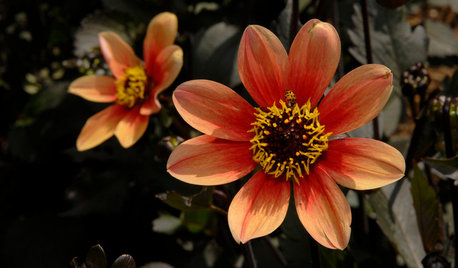
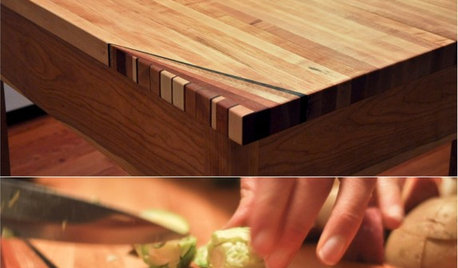

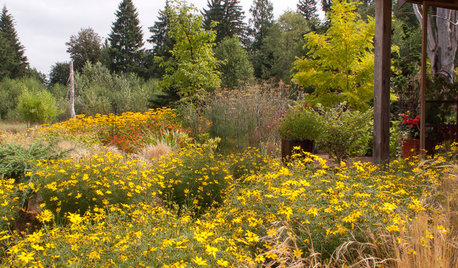



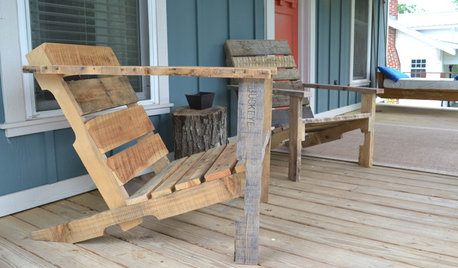
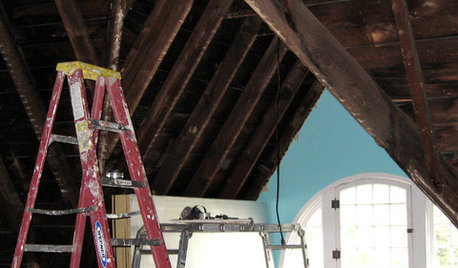
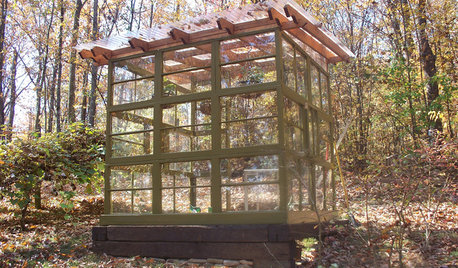



pdshop
sturgeonguyOriginal Author
Related Discussions
Need instructions on how to root cuttings
Q
How long to cut dahlia stems
Q
starting dahlias from cuttings
Q
Dahlia from cuttings in Fall?
Q
adfleming_shaw_ca
teddahlia
mandolls